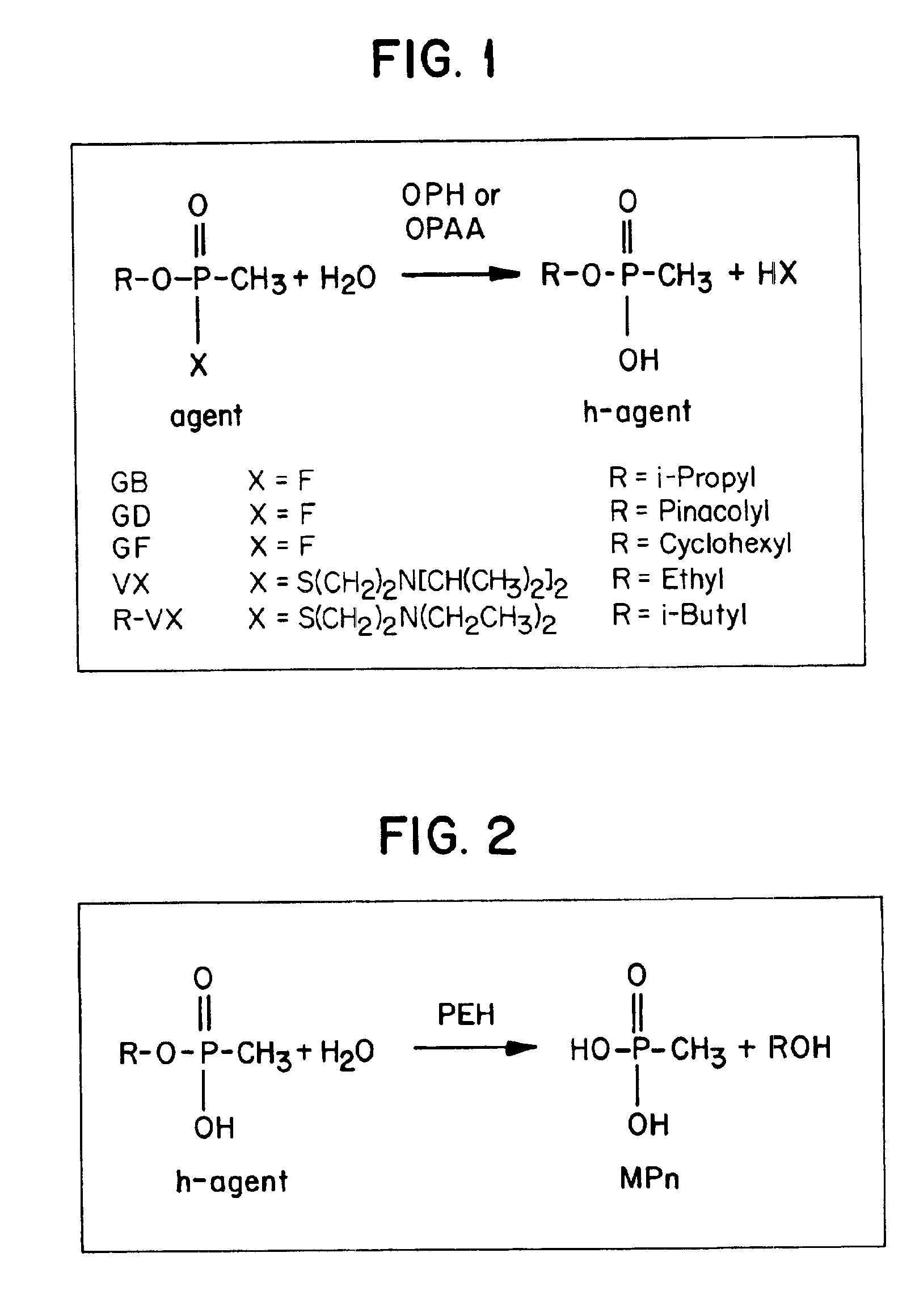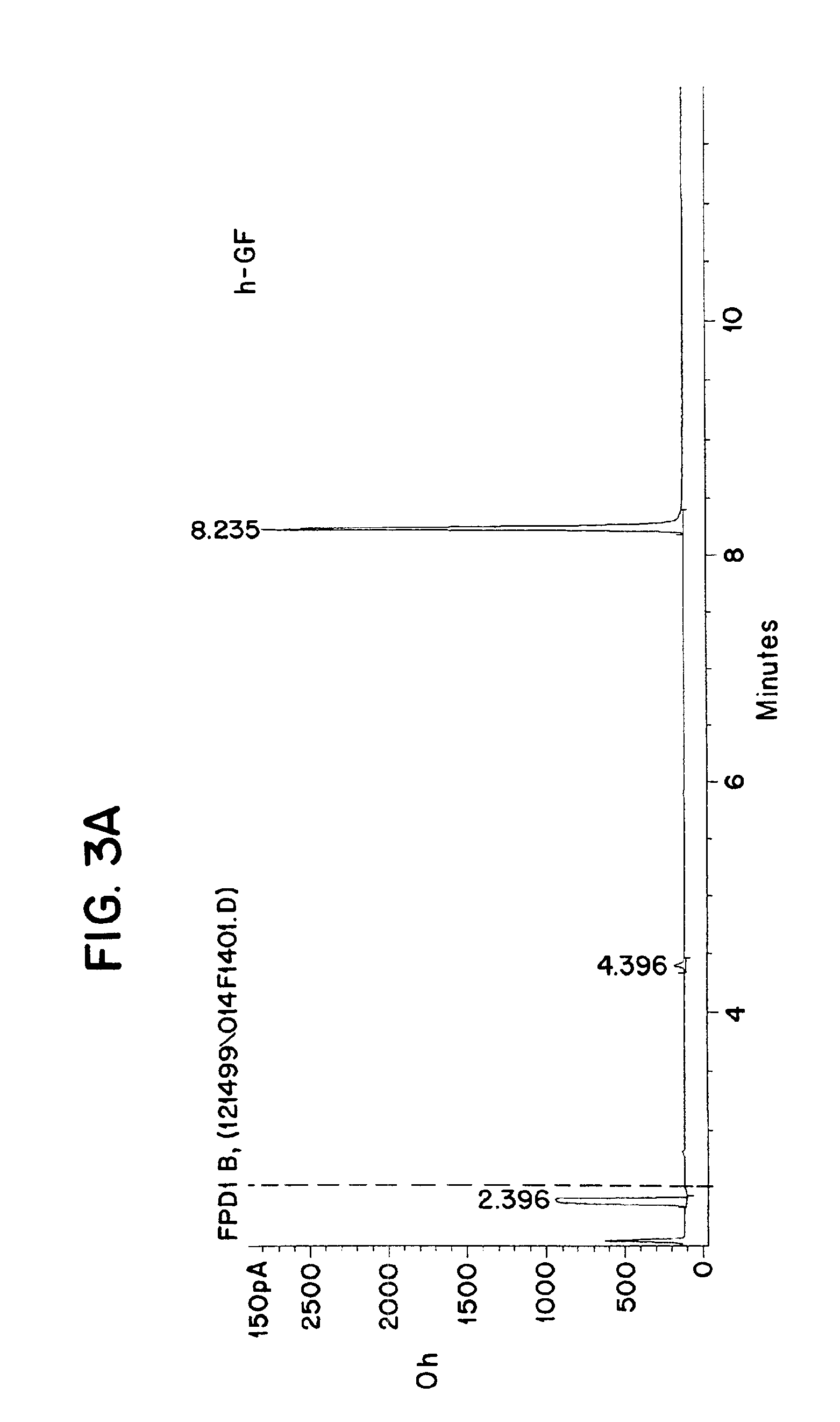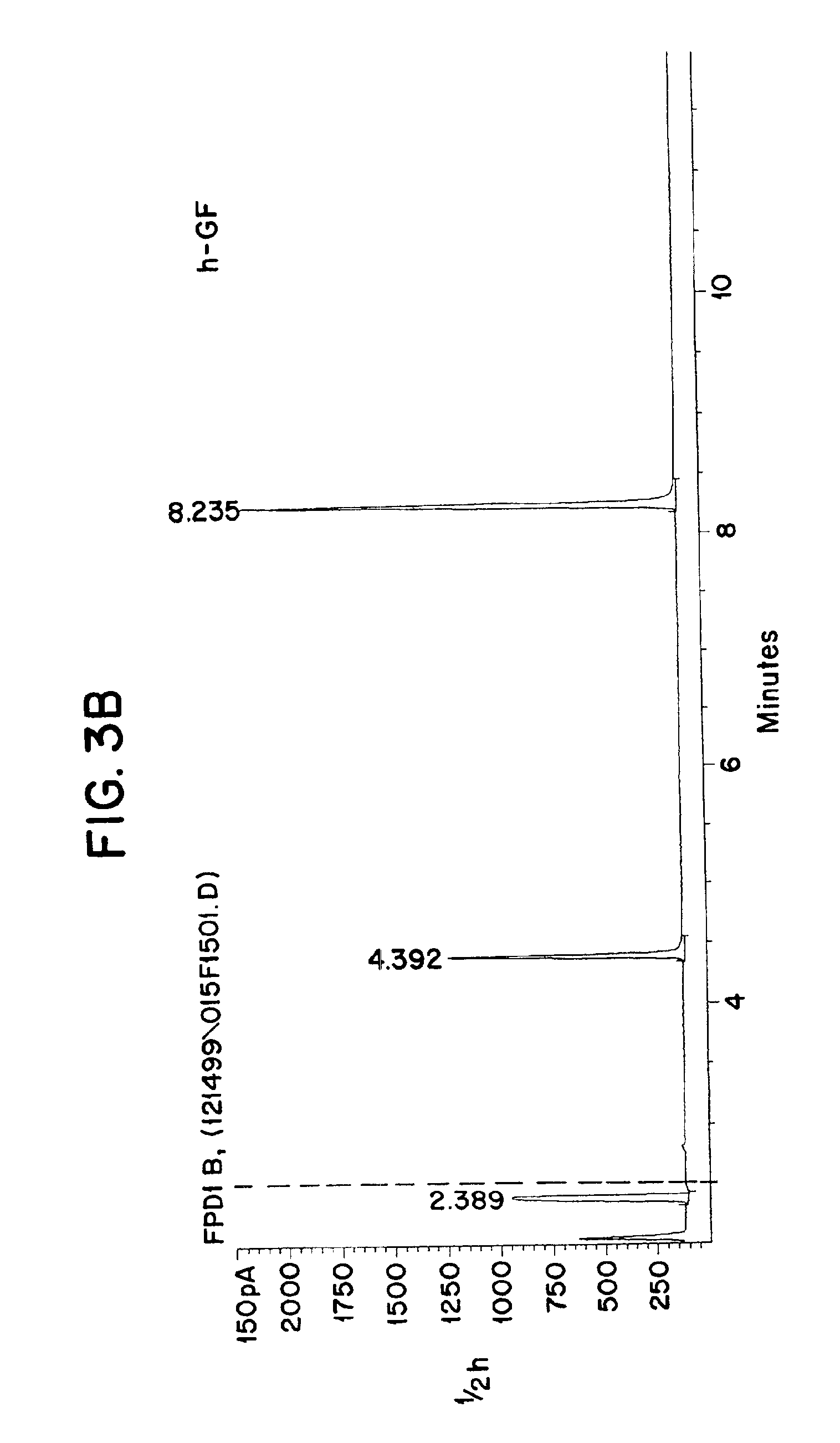Method for detecting G- and V-agents of chemical warfare and their degradation products
a technology of degradation products and chemical warfare agents, which is applied in the field of methods and kits for detecting the presence of chemical warfare agents and degradation products, can solve the problems of insufficient methodologies for the detection and analysis of g- and v-type chemical warfare agents (cwa) containing phosphonate esters and their products, and their failure to rapidly detect and identify known g- and v-agents, so as to reduce time and effort, high reliability, and rapid screening
- Summary
- Abstract
- Description
- Claims
- Application Information
AI Technical Summary
Benefits of technology
Problems solved by technology
Method used
Image
Examples
Embodiment Construction
[0043]This invention augments existing chemical warfare agent detection methods and is based on a novel generic method that is predicated by the specificity of PEH to degrade the products of the agents. The method can be used for both initial screening and identification purposes with vastly improved efficiency and reliability. The methods, kits and compositions of this invention would be suitable for many applications, both military and civilian. It would be especially well suited for Chemical Weapons Convention (CWC) verification purposes, where the highest degree of reliability is required and both the allotted time and the allowed equipment are very limited. In this regard, the proposed method could be applicable for Domestic Preparedness and Homeland Defense Programs as well.
[0044]By making use of the specificity of certain enzymes—PEH alone, or a combination of OPH, OPAA and PEH—our invention is able to facilitate the identification and quantification of both known and unknown...
PUM
| Property | Measurement | Unit |
|---|---|---|
| Time | aaaaa | aaaaa |
| Time | aaaaa | aaaaa |
| Time | aaaaa | aaaaa |
Abstract
Description
Claims
Application Information
 Login to View More
Login to View More - R&D
- Intellectual Property
- Life Sciences
- Materials
- Tech Scout
- Unparalleled Data Quality
- Higher Quality Content
- 60% Fewer Hallucinations
Browse by: Latest US Patents, China's latest patents, Technical Efficacy Thesaurus, Application Domain, Technology Topic, Popular Technical Reports.
© 2025 PatSnap. All rights reserved.Legal|Privacy policy|Modern Slavery Act Transparency Statement|Sitemap|About US| Contact US: help@patsnap.com



